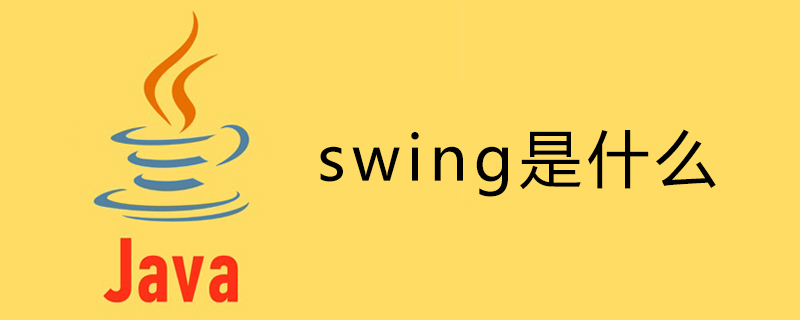
Swing is a development toolkit for developing Java application user interfaces, that is, the UI of the Java platform; it acts as the software that handles all interactions between the user and the computer, and is actually the middleman between the user and the inside of the computer.

Swing is based on the Abstract Window Toolkit (AWT) so that cross-platform applications can use any pluggable appearance style. Swing developers can take advantage of Swing's rich, flexible features and modular components to create elegant user interfaces with only a small amount of code.
All packages in the toolkit are named with swing, such as javax.swing, javax.swing.event.
Steps to create a graphical interface with Swing:
1), import the Swing package
2), select the interface style
3), set the top-level container
4), set the button and label
5), place the component on the container
6), for the component Adding borders
7), handling events
8), assistive technology support
Let’s briefly introduce it below:
Import package
The following statement imports the Swing package
import javax.swing.*;
Most Swing programs use the basic underlying structure and event model of AWT, so two packages need to be imported:
import java.awt.*; import java.awt.event.*;
If the graphics The interface includes event processing, so you also need to import the event processing package:
import javax.swing.event.*;
Select the interface style
Swing allows you to choose the graphical interface style of the program. Commonly used Java styles are , windows style, etc.
The following code is used to select the graphical interface style. The cross-platform Java interface style is selected here.
try { UIManager.setLookAndFeel(
UIManager.getCrossPlatformLookAndFeelClassName( )); }
catch (Exception e) { }Set the top-level container
The graphical interface must have at least one top-level Swing container. The top-level Swing container provides support for other Swing components to draw and handle events on the screen.
Commonly used top-level containers:
JFrame (frame): represents the main program window
JDialog (dialog): Each JDialog object represents a Dialog box, the dialog box belongs to the secondary window
JApplet (small program): displays a small program interface in the browser
A frame includes the border, menu bar, toolbar, and status bar, And the pane that occupies the main part in the middle
The pane can also be regarded as a kind of panel, but it is an integral part of the frame
The component will not be placed directly on the frame, but Place it on several panels, and then place these panels on the pane
Use the getContentPane() function of the frame object to obtain the pane, and then call the add() function of the pane to place the panel
public static void main(String[ ]args){JFrame frame=new JFrame("SwingApplication");
JPanel panel1=new JPanel();
frame.getContentPane().add(panel1,BorderLayout.CENTER);
......//添加其他组件
frame.pack();frame.setVisible(true);The above is the detailed content of What is swing in java. For more information, please follow other related articles on the PHP Chinese website!